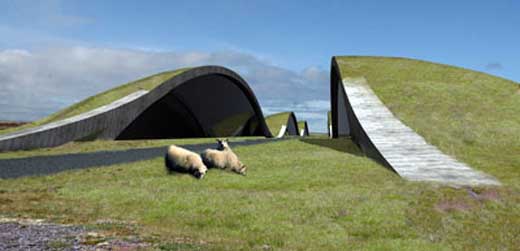Preserving old data can take many forms. Árni Magnússon spent most of his life collecting Icelandic manuscripts, famously finding scraps of sagas stuffed in the rafters of cottages; he saved every shred he could find. When he died in Denmark in 1730, the manuscripts stayed there, too. After World War II, Denmark agreed to return them to the newly independent Iceland, a process that began in 1971 and continued for 26 years. According to this PDF, the Royal Library in Copenhagen returned 141 manuscripts, while the Danish institute named for Árni Magnússon returned a staggering 1,666 manuscripts and more than 7,000 legal documents.
Icelanders were delighted, as The Economist reported in 1997:
Middle-aged Icelanders still remember the excitement of standing at Reykjavik harbour in 1971 when a Danish naval ship brought back the first manuscripts. “It was a singular show of friendship on the part of the Danes,” says Elias Snaeland Jonsson, a writer and a journalist, not least because the Danes were under no legal obligation to return the manuscripts.
Today, if you visit Reykjavik, go to the Árni Magnússon Institute and marvel at these tough old books—especially the Codex Regius of the Poetic Edda, one of the first manuscripts to be returned to Iceland. Consisting of the oldest surviving copies of the eddas, the poems about early Germanic gods and heroes, the Konungsbók Eddukvæða—as it’s known in Icelandic—is uniquely important: wthout it, our already scant knowledge of the myths and legends of early Germanic people would be cut at least in half.
For centuries, the Danes appointed themselves the custodians of Icelandic history. The Icelanders now control their own past, but they may be the keepers of everyone’s futures. In its May 22 report on the world’s massive server farms, The Economist noted that data centers need cheap power, water for cooling, and the security of physical remoteness. Enter the heirs of the Vikings:
Iceland has begun to market itself as a prime location for data centres, again for the cool climate, but also because of its abundant geothermal energy. Hitachi Data Systems and Data Islandia, a local company, are planning to build a huge data-storage facility (pictured at top of article). It will be underground, for security and to protect the natural landscape.
Technology will make this future possible, but the Icelandic character makes it wonderfully fitting. In his 1955 Nobel acceptance speech, Icelandic novelist Halldór Laxness recalled the saga-writers who made it their work to preserve their own past:
They live in their immortal creations and are as much a part of Iceland as her landscape. For century upon dark century those nameless men and women sat in their mud huts writing books without so much as asking themselves what their wages would be, what prize or recognition would be theirs. There was no fire in their miserable dwellings at which to warm their stiff fingers as they sat up late at night over their stories.
In years to come, if your travels take you to rural Iceland, the hillsides you see may be wholly man-made. Preserved in those hills will be all you’re forgetting: your music, your writing, and even your photos of Iceland itself—misplaced, and in fragments, and surely abandoned, but waiting for someone, a new Árni Magnússon, to shoo away sheep and remember.


2 thoughts on ““Get out of the road if you want to grow old.””